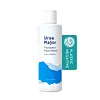What's inside
What's inside
 Key Ingredients
Key Ingredients

 Benefits
Benefits

 Concerns
Concerns

 Ingredients Side-by-side
Ingredients Side-by-side

Aloe Barbadensis Leaf Juice
Skin ConditioningLauryl Glucoside
CleansingCoco-Glucoside
CleansingDisodium Cocoyl Glutamate
CleansingSodium Lauroamphoacetate
CleansingCaprylyl Glucoside
CleansingInulin
Skin ConditioningGlyceryl Laurate
EmollientGluconolactone
Skin ConditioningSodium Lauroyl Glutamate
Xylitylglucoside
HumectantAnhydroxylitol
HumectantXylitol
HumectantOryza Sativa Extract
AbsorbentCamellia Sinensis Leaf Extract
AntimicrobialRosmarinus Officinalis Leaf
Skin ConditioningLavandula Intermedia Oil
MaskingLamium Album Flower Water
Skin ConditioningPicea Glehnii Needle Oil
MaskingPseudotsuga Menziesii Branch/Leaf Oil
PerfumingCitrus Paradisi Peel Oil
MaskingCitrus Aurantifolia Peel Oil
MaskingArtemisia Argyi Leaf Oil
MaskingJuniperus Virginiana Wood Oil
PerfumingTanacetum Annuum Flower Oil
MaskingVetiveria Zizanoides Root Oil
MaskingMentha Viridis Leaf Oil
AstringentPogostemon Cablin Leaf Oil
MaskingWater
Skin ConditioningVaccinium Myrtillus Bud Extract
AntioxidantSaccharum Officinarum Extract
MoisturisingCitrus Aurantium Dulcis Fruit Extract
MaskingCitrus Limon Fruit Extract
MaskingAcer Saccharum Extract
Skin ConditioningLeuconostoc Ferment Filtrate
AntimicrobialSuperoxide Dismutase
AntioxidantSoybean Peroxidase
AntioxidantSodium Phytate
PCA Glyceryl Oleate
EmollientCitric Acid
BufferingSodium Benzoate
MaskingAloe Barbadensis Leaf Juice, Lauryl Glucoside, Coco-Glucoside, Disodium Cocoyl Glutamate, Sodium Lauroamphoacetate, Caprylyl Glucoside, Inulin, Glyceryl Laurate, Gluconolactone, Sodium Lauroyl Glutamate, Xylitylglucoside, Anhydroxylitol, Xylitol, Oryza Sativa Extract, Camellia Sinensis Leaf Extract, Rosmarinus Officinalis Leaf, Lavandula Intermedia Oil, Lamium Album Flower Water, Picea Glehnii Needle Oil, Pseudotsuga Menziesii Branch/Leaf Oil, Citrus Paradisi Peel Oil, Citrus Aurantifolia Peel Oil, Artemisia Argyi Leaf Oil, Juniperus Virginiana Wood Oil, Tanacetum Annuum Flower Oil, Vetiveria Zizanoides Root Oil, Mentha Viridis Leaf Oil, Pogostemon Cablin Leaf Oil, Water, Vaccinium Myrtillus Bud Extract, Saccharum Officinarum Extract, Citrus Aurantium Dulcis Fruit Extract, Citrus Limon Fruit Extract, Acer Saccharum Extract, Leuconostoc Ferment Filtrate, Superoxide Dismutase, Soybean Peroxidase, Sodium Phytate, PCA Glyceryl Oleate, Citric Acid, Sodium Benzoate
Water
Skin ConditioningGlycerin
HumectantCocamidopropyl Betaine
CleansingCoco-Glucoside
CleansingSodium Lauroyl Methyl Isethionate
CleansingCocamidopropyl Hydroxysultaine
CleansingSodium Methyl Oleoyl Taurate
CleansingPropanediol
SolventAloe Barbadensis Leaf Extract
EmollientGlycolipids
Skin ConditioningLinoleic Acid
CleansingLinolenic Acid
CleansingLauryl Glucoside
CleansingCucumis Melo Cantalupensis Fruit Extract
AstringentSclerocarya Birrea Seed Oil
HumectantDipotassium Glycyrrhizate
HumectantTocopherol
AntioxidantCitric Acid
BufferingPhenoxyethanol
PreservativeSodium Hydroxide
BufferingSodium Benzoate
MaskingSodium Chloride
MaskingPolylysine
Water, Glycerin, Cocamidopropyl Betaine, Coco-Glucoside, Sodium Lauroyl Methyl Isethionate, Cocamidopropyl Hydroxysultaine, Sodium Methyl Oleoyl Taurate, Propanediol, Aloe Barbadensis Leaf Extract, Glycolipids, Linoleic Acid, Linolenic Acid, Lauryl Glucoside, Cucumis Melo Cantalupensis Fruit Extract, Sclerocarya Birrea Seed Oil, Dipotassium Glycyrrhizate, Tocopherol, Citric Acid, Phenoxyethanol, Sodium Hydroxide, Sodium Benzoate, Sodium Chloride, Polylysine
 Reviews
Reviews

Ingredients Explained
These ingredients are found in both products.
Ingredients higher up in an ingredient list are typically present in a larger amount.
Citric Acid is an alpha hydroxy acid (AHA) naturally found in citrus fruits like oranges, lemons, and limes.
Like other AHAs, citric acid can exfoliate skin by breaking down the bonds that hold dead skin cells together. This helps reveal smoother and brighter skin underneath.
However, this exfoliating effect only happens at high concentrations (20%) which can be hard to find in cosmetic products.
Due to this, citric acid is usually included in small amounts as a pH adjuster. This helps keep products slightly more acidic and compatible with skin's natural pH.
In skincare formulas, citric acid can:
While it can provide some skin benefits, research shows lactic acid and glycolic acid are generally more effective and less irritating exfoliants.
Most citric acid used in skincare today is made by fermenting sugars (usually from molasses). This synthetic version is identical to the natural citrus form but easier to stabilize and use in formulations.
Read more about some other popular AHA's here:
Learn more about Citric AcidCoco-Glucoside is a surfactant, or a cleansing ingredient. It is made from glucose and coconut oil.
Surfactants help gather dirt, oil, and other pollutants from your skin to be rinsed away.
This ingredient is considered gentle and non-comedogenic. However, it may still be irritating for some.
Learn more about Coco-GlucosideLauryl Glucoside sugar- and lipid-based cleansing agent. It is created from glucose and lauryl alcohol.
This ingredient is a surfactant, making it easier to rinse oil, dirt, and other pollutants away.
A British study found lauryl glucoside to cause skin sensitivity for some people. We recommend speaking with a professional if you have concerns.
Other names for this ingredient include "Lauryl Polyglucose", "Lauryl glycoside", and "D-Glucopyranoside".
Learn more about Lauryl GlucosideSodium Benzoate is a preservative. It's used in both cosmetic and food products to inhibit the growth of mold and bacteria. It is typically produced synthetically.
Both the US FDA and EU Health Committee have approved the use of sodium benzoate. In the US, levels of 0.1% (of the total product) are allowed.
Sodium benzoate works as a preservative by inhibiting the growth of bacteria inside of cells. It prevents the cell from fermenting a type of sugar using an enzyme called phosphofructokinase.
It is the salt of benzoic acid. Foods containing sodium benzoate include soda, salad dressings, condiments, fruit juices, wines, and snack foods.
Studies for using ascorbic acid and sodium benzoate in cosmetics are lacking, especially in skincare routines with multiple steps.
We always recommend speaking with a professional, such as a dermatologist, if you have any concerns.
Learn more about Sodium BenzoateWater. It's the most common cosmetic ingredient of all. You'll usually see it at the top of ingredient lists, meaning that it makes up the largest part of the product.
So why is it so popular? Water most often acts as a solvent - this means that it helps dissolve other ingredients into the formulation.
You'll also recognize water as that liquid we all need to stay alive. If you see this, drink a glass of water. Stay hydrated!
Learn more about Water